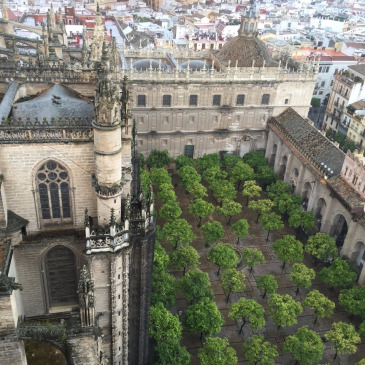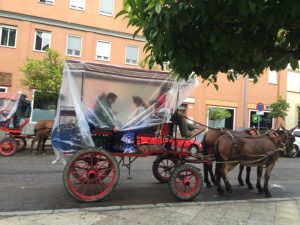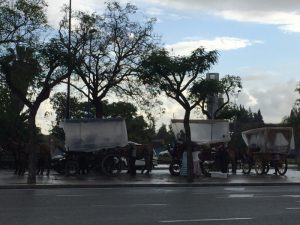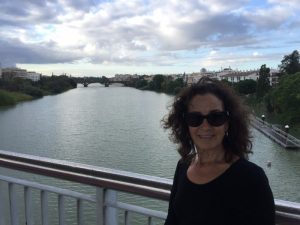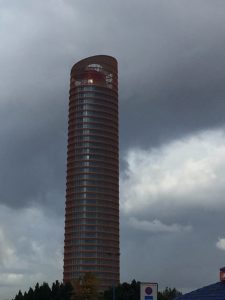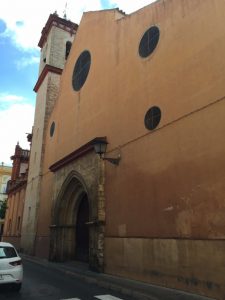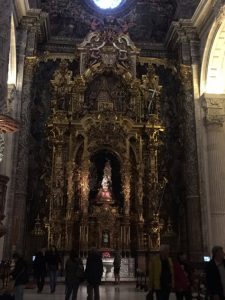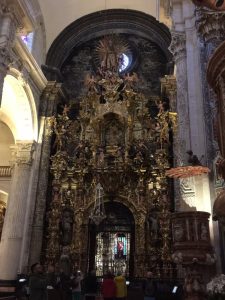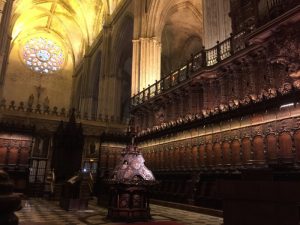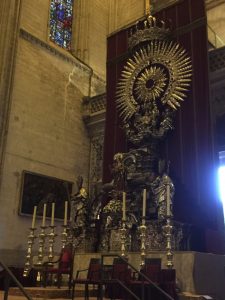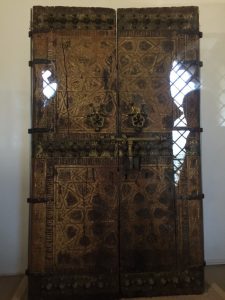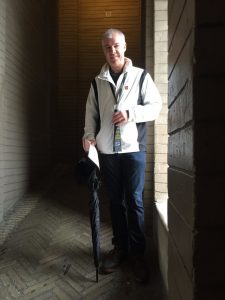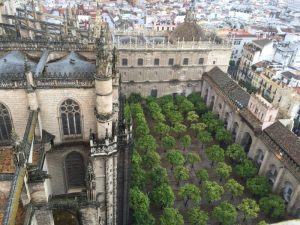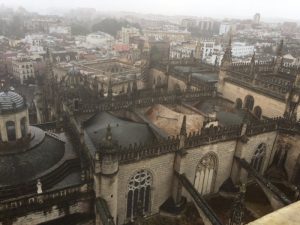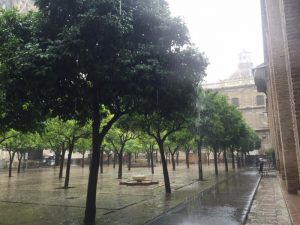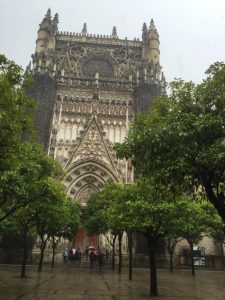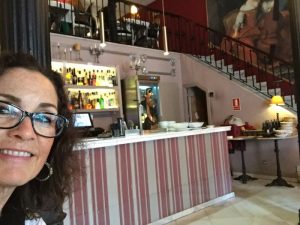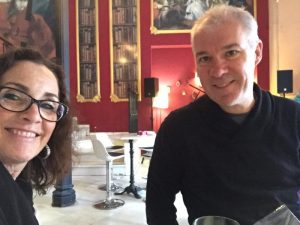Wednesday 11th May: Seville Cathedral Day.
The sun was out this morning and so we took the opportunity to head out for a walk. The apartment owner had advised us about a major pilgrimage procession starting today at between 8 and 9 am from two different local Churches and so we made one of these our destination for our walk. Sadly, we were either too early or the run of bad weather may have caused them to change plans as we only saw a few Pilgrims preparing for this event and not the hundreds we had been warned about.
On our way home, the first time approaching our apartment without a raised umbrella, I noted we had an old Church and one time Mosque right on our corner. The give away here is the combination of mud bricks and stone in the Muslim/Christian combo architecture I have mentioned before known as Mudejar.
The plan for the day was to head to the Cathedral of Seville and take the audio-guide option as we have found it a bit too hard understanding the Spanish guides on our guided tours thus far. We had read that if we visit the Church of El Salvador first and buy a combo ticket for this and the Cathedral then we won’t have to join the long queues at the Cathedral which was something of great value in this weather.
The rain started pretty much as we stepped out the door from our apartment but wasn’t too heavy until we reached the Church of El Salvador. However, it was pretty heavy and continuous from then on and until we stopped some hours later for lunch.
The Cathedral of Seville was packed with literally thousands of tourists, young and old, but we made our way around this amazing space. Whilst only the third largest Cathedral in the world this is the largest Gothic Cathedral in the world and is also on the World Heritage list. The Cathedral occupies the site of a previous 12th Century Mosque and remnants of this earlier Muslim life can be seen in the attached Giralda Tower and the Orange Grove. The give away sign again being the mixture of stone with that of mud brick. The Christians used stone as a symbol of enduring strength whereas the Muslims built using mud brick as a symbol of the temporary nature of all things other than Allah. We took some shots of the outside of the Cathedral the other day but it was too wet, yet again, to capture some more external photos.
The Cathedral is a massive space made up of many sections and chapels and rates as third in importance for the collection of treasured Spanish art. There is the largest Altarpiece in the world as well as the most amazing Silver Altarpiece, the latter of which had been taken at one stage by Napoleon for protection but later returned, albeit in pared-down form. We also climbed the ramps up to the top of Giralda Tower. The Tower had previously been the minaret part of a Mosque but had been assumed into the Cathedral and with another layer of stone and bells added to complete the transformation. The route up to the top of the Tower was via a series of ramps as this had previously been used by the Muezzin to access the top of the Minaret for the call to prayer. Five trips up and down each day would have been too arduous to do by stairs and so they put in a ramp and the Muezzin would ride a donkey up and back for the five daily journeys. The exit from the Cathedral was through the Orange Grove which had previously been the place where Muslims bathed before entering the Mosque.
The rain was still pouring by the time we left the Cathedral and we became rather wet on our way to lunch but did manage to stop off for some Tapas before heading home for a rest. This was our second day of being drenched through to our socks and we were getting rather tired of it.
The plan for the night was to visit El Corte Ingles and buy some dinner to have in as are a bit sick of the rain.
Also, just a couple of things we’ve noted: the people here are nowhere near as friendly as those just across the border in Portugal AND there is much less spoken-English competency here compared to Lisbon.
